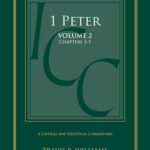What to Do When the Original Text Makes No Sense
I was preparing for my class in the OT Historical Books the other day when I stumbled over one of the ESV’s little-advertised translation changes in 1 Samuel 13:1 (I’d call it a stealth version, but that would be a cheap shot). Unlike many of these changes, this was a significant one—and a curious one.
First Samuel 13:1 is one of the few places in Scripture where the Hebrew text is so mangled that the original reading is almost certainly lost. The rotely literal reading of the text goes this way: “Saul [was] a son-of-a-year in-his-reigning, and he reigned two years over Israel.” Of course, when translating Hebrew, no one ever translates with rote literalness (language doesn’t work that way), so two decisions need to be made right away: (1) the phrase “son-of-a-year” is a very common idiom for communicating age found dozens of times in the OT: Saul was a year old. The construction “in-his-reigning” is also idiomatic. The construction appears on 38 other occasions in the OT, and in every case means when he became king or when he began to reign. The plainest and most natural reading, then, is that “Saul was one year old when he began to reign, and he reigned two years over Israel.”
Of course, this reading is absurd, because we know that when Saul began to reign he was a head taller than other men, was tending livestock, carrying on adult conversations, and even waging war (so 1 Sam 9-12). He was hardly a baby! So what are we to do? Well, at least three solutions appear in the translations:
- Most modern translations assume that the original reading was lost and fill in the missing material by appealing to ancient versions and by harmonizing the data from the rest of the Scriptures. We get a translation something like this: “Saul was [thirty] years old when he became king, and he reigned over Israel [forty-] two years.” This is the NIV84 reading (2011 drops the brackets), and is the approach of the HCSB, NLT, NASB95 and, with a few variations, the NET and NASB71.
- The first two editions of the ESV (2001 and 2007), following the lead of the RSV, its parent translation, leaves the text “as-is.” Thus, “Saul was…years old when he began to reign; and he reigned…and two years over Israel.” This reading, odd as it may seem, is in keeping with the ESV’s policy for difficult readings to engage in as little “interpretation” as possible and to instead let the reader decide.
In the 2011 edition of the ESV, however, the better part of prudence apparently trumped this policy. While I am not privy to the conversations that led to the change, I have two guesses as to why the old reading was abandoned: (1) it starkly implied incomplete preservation of the text and (2) left the uninformed reader without any help just when he needed it the most. And so a new approach emerged:
- The ESV2011 tries to make sense of the Hebrew reading as it stands, offering a montage of unlikely idioms and emendations to come up with something plausible that does not rely on an translator’s insertion: “Saul lived for one year and then became king, and when he had reigned for two years over Israel…” This approach has something of a precedent in the KJV/NKJV: “Saul reigned one year; and when he had reigned two years over Israel…”
So what can we take from this little exercise? Well, among other things:
- Translation is never simple, and formal equivalence will rarely work for more than a verse or two before it must be abandoned. We might talk about a version being “more formal” or “less formal” than another, but never purely formal.
- Translation always involves interpretation. Always. Even the decision of the RSV to supply ellipses instead of words is an exercise in theological interpretation.
- The most “literal” translations at times are sometimes very dynamic, and the most dynamic of translations are sometimes very literal.
- People sometimes need expert help when they read the Bible. That’s why we have translators and that’s why we have teachers. Do translators and teachers sometimes betray us? Absolutely. But without them, the Christian life would be exceedingly difficult.



I’ve found V. P. Long’s suggestion contextually persuasive. He suggests that the author reduced the length of Saul’s reign to two years to indicate God’s judgment. The two year period marks the period from Saul’s anointing to David’s anointing. “Saul’s yearling status would refer to the time which elapsed between Saul’s secret anointing (1 Sam 10) and the renewal of the kingdom (11:14-15), while the two-year reign would be reckoned from his official inauguration (13:1) to the anointing of David (ch. 16).” The Reign and Rejection of King Saul: A Case for Literary and Theological Coherence, SBL Dissertation Series 118 (Scholars Press, 1989), 75. If Long’s thesis and his critique of the other views is correct (pp. 72-74), the ESV is moving in the right direction on this one.
I was also pleased that Daniel 7:27 was changed from:
And the kingdom and the dominion
and the greatness of the kingdom under the whole heaven
shall be given to the people of the saints of the Most High;
their kingdom shall be an everlasting kingdom,
and all dominions shall serve and obey them.
to
And the kingdom and the dominion
and the greatness of the kingdom under the whole heaven
shall be given to the people of the saints of the Most High;
him kingdom shall be an everlasting kingdom,
and all dominions shall serve and obey him.
I was less pleased that they changed 2 Peter 1:19 from “And we have something more sure, the prophetic word,” to “And we have the prophetic word more fully confirmed.” I know the change matches the current scholarly consensus, but I think a good case can be made for the ESV’s old wording.